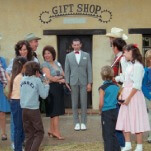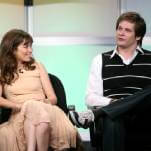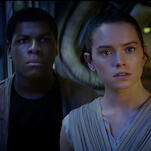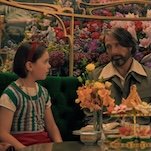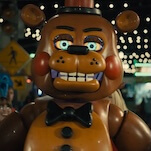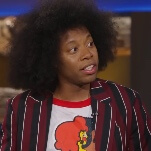Dollhouse: "The Hollow Men"
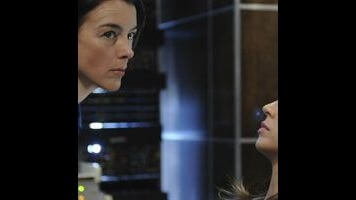
Ladies and gentlemen of Dollhouse Nation, I come before you a changed man. When last I filled in for Scott, it was for the Season One broadcast finale “Omega,” and in that write-up, I confessed that while I liked the show, I was pretty far from a True Believer. And to be honest, I wasn’t as persuaded by “Epitaph One” as a lot of my TV critic colleagues. I appreciated what it was doing structurally, but I still wasn’t buying into the dilemma at the heart of Dollhouse: the loss of individuality due to the meddling of a malicious corporation. I could stretch and make that theme relevant to the real world, but halfway through the run of the series, the situation—and the characters involved—still struck me as too fantastical. Entertaining to watch, but not anything I could get emotionally involved in.
Well, something must have changed about Dollhouse in Season Two, because about halfway through this season, I realized how I’d invested I’d become. Dollhouse went from being a show I’d “catch up with” when my TiVo started getting full to a show I had to watch on the night he aired. I don’t think I’ve ever seen a series that started out so scattered pull itself together so dramatically; the writers have found ways to make all those elements of the show that I merely endured in the early going—Topher, the blankness of the dolls, the faltering tech, and, oh, the essential premise—into elements that now seem vital, engaging, and that even make sense, retroactively. (Well, sort of. There are still a few kinks there.) And as they’ve advanced the master-plot by digging into the secret history of the Rossum corporation and its network of Dollhouses, the writers have begun embracing everything unique about Dollhouse, and letting episodes roam towards into the idiosyncratic rather than trying to fit the wilder elements into a conventional action-adventure mold.
Granted, there’s still an element of what-might’ve-been to Dollhouse as it approaches its final finale. What if the show had been as sure of itself from the start? Well, for one, Fox probably would’ve cancelled Dollhouse outright rather than ordering a second season. But still, it would’ve been nice if significant pieces of mythology like “the remote wipe” and Caroline’s college activism had been introduced more confidently and more integrally, rather than appearing in passing. And what if Dollhouse had enough of a budget to flesh out its globe-hopping, apocalyptic ambitions? Maybe the stories wouldn’t have to keep returning to the same two or three underpopulated rooms, and maybe the same actors wouldn’t have to keep getting repurposed.
Of course, on one level, the re-use of the same people makes as much thematic sense as it does budgetary sense. (This is a show about bodies as shells for different personalities, after all.) Still, some of the surprise reveals of this season—good guys turning out to be bad guys—have seemed more driven by money than plot. For example, I’m not entirely sure what to make of the return of Whiskey/Claire (even though the character did appear in “Epitaph One” too). Having her back in the story as a villain feels like cheap audience manipulation, combined with a way to get the maximum use of an actor under contract.
Then again, who wouldn’t want find a way to put Amy Acker to use, especially when she can look and sound so cool delivering lines like, “I have enhanced weapon skills. Anyone care to see a demonstration?” (Followed closely by Recurring Joss Whedon Motif #1: Two hot young actresses getting their money's worth from their stage combat classes.) And if you’re graced with a talent like Enver Gjokaj, why not come up with an excuse to imprint Victor/Anthony with the personality of Topher again, so that Gjokaj can do his uncanny Fran Kranz impression? Outside of whatever flashbacks we get in “Epitaph Two” in two weeks, “The Hollow Men” was the end of the journey for our core characters in the primary timeline of the show. So why not pull out all the stops?
“The Hollow Men” jumps back and forth from Los Angeles to Tuscon, where our heroes aim to take down Rossum’s mainframe. In L.A., Victor/Anthony and Sierra/Priya have returned to the Dollhouse to find it overrun with Rossum’s mercenaries. Victor sits in the imprint chair, receives the gift that Topher left for him—himself!—and uses hidden camera footage to learn that Boyd interfered with Echo’s attempt to load Caroline’s memories. Then Victor restores his Anthony persona, adding some mad ninja skillz (another Topher gift), and follows the gang’s trail to Tuscon, as Topher had planned. (“Go team!” Topher enthuses, hundreds of miles away.)
Meanwhile, in Arizona, Paul and Mellie/November are skulking about the Rossum facility when a message over the loudspeaker re-triggers November’s latent “mindless killing machine” mode, leading to Paul trying to plead with whatever scrap of Mellie still dwells within November, and November responding by killing herself to save his life. (And there’s Recurring Joss Whedon Motif #2: Recreating the climactic sequences of The X-Men’s “Dark Phoenix Saga.”) Paul then finds Boyd in the hall, but since he doesn’t yet know that Boyd’s a bad guy, he joins forces with Boyd… right up to the point that Boyd points a gun at his head. (“What did I miss?” Paul sighs.)































